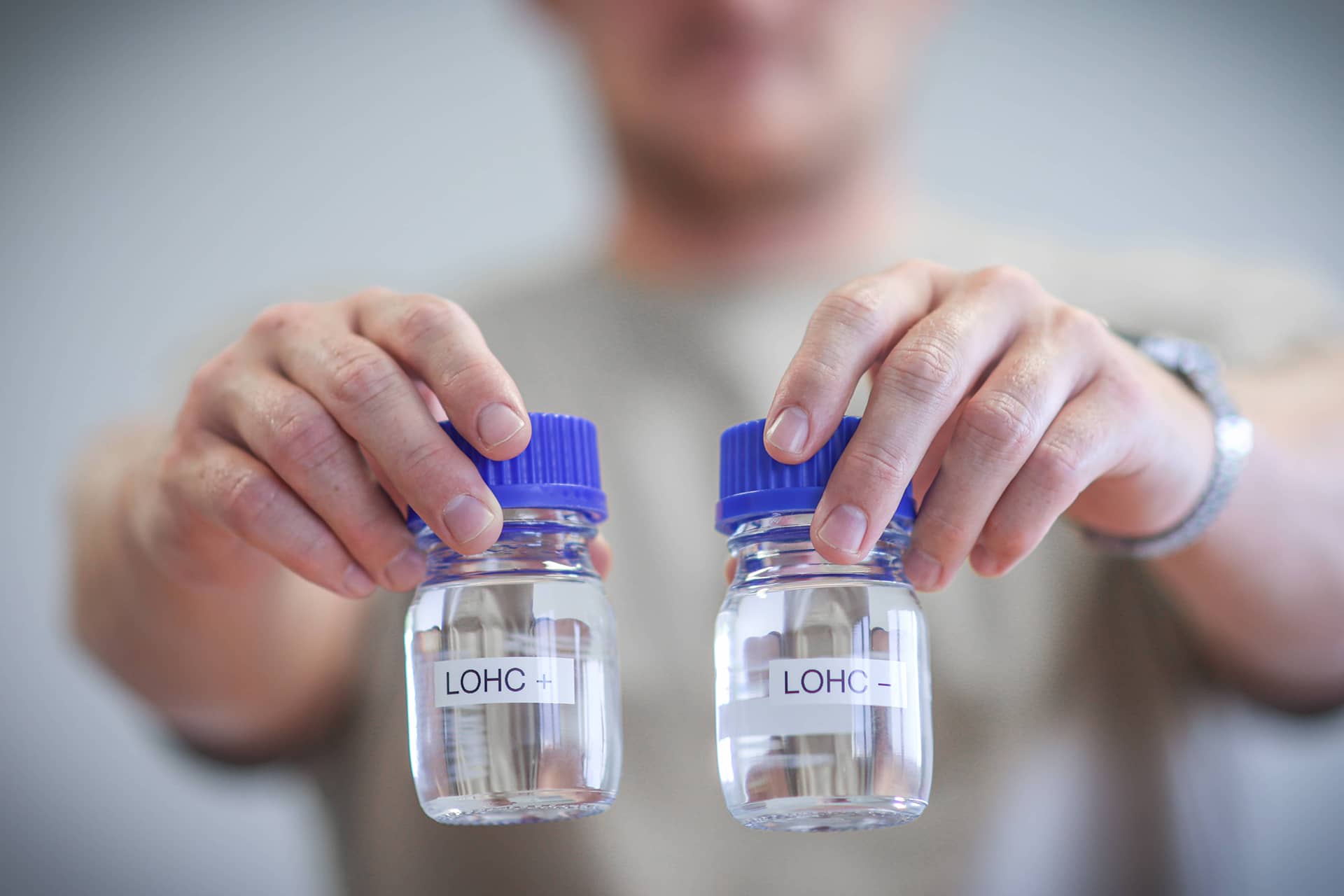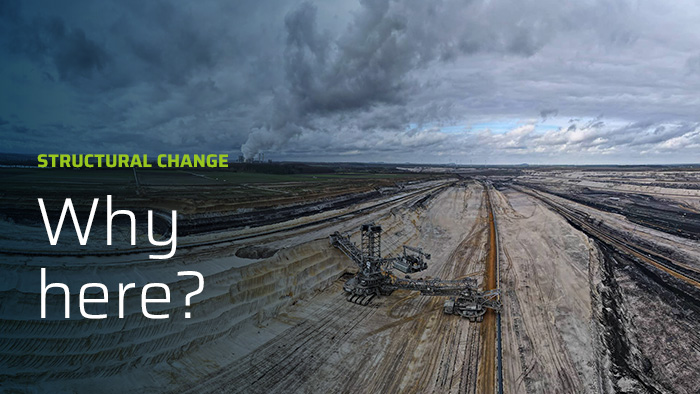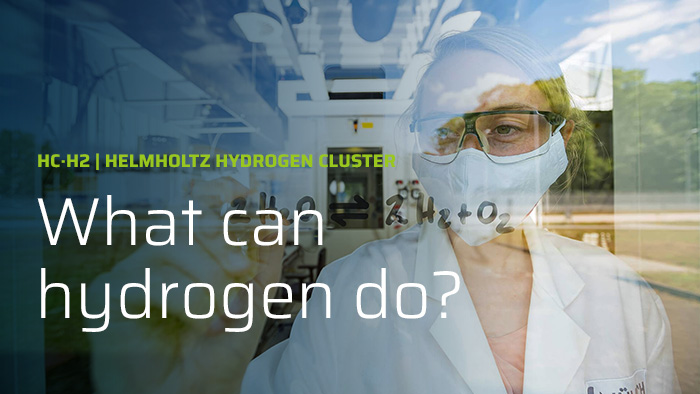Being open to new technologies is important, as different forms of hydrogen derivatives and hydrogen technologies may be required depending on the application and its location to achieve the best combination of sustainability and costs. And it is this combination that is so important. In principle, this is not so different from our old world of fossil fuels, in which we use coal, heavy oil, kerosene, gasoline, or gas depending on whether we want to power a container ship or heat a single-family home, for example. In the same way, we require more than one hydrogen technology, given the scale of the task at hand. The future global hydrogen economy will include many different forms of hydrogen supply, for example in the form of compressed hydrogen or liquid organic hydrogen carriers as well as ammonia, methanol, or formic acid.
TECHNOLOGIES
Why are we open to new technologies?

How do we get green hydrogen to customers?
Chemical hydrogen storage is an important pillar of our future energy system. It is a process that involves converting renewable electricity into energy-rich molecules, which are then stored over a long period of time, transported over long distances, and can be used, for example, in industry or to power large vehicles. The energy-rich molecules talked about today are often referred to as hydrogen derivatives, as they are created by bonding hydrogen to a carrier molecule. Suitable carrier molecules include nitrogen or CO2, both of which are components of air, as well as organic liquids, which – as we know from the bottle deposit principle – can be used in multiple charge/discharge cycles. What’s important is that all technologies form a sustainable hydrogen cycle. In this instance, cycle refers to the carrier molecule being reused as often as possible.
Key steps in the chemical hydrogen storage process include the binding of hydrogen to the carrier molecule at the point of production and the release of hydrogen wherever the customer is situated, for instance in an industrial plant, at a hydrogen filling station, or to be fed into a pipeline. Both processes use reaction accelerators, known as catalysts. The storage and release units form suitable process solutions together with the necessary auxiliary units and hydrogen purification units. We are working in various projects to optimize catalysts, apparatus, and the corresponding processes for different storage technologies to achieve attractive products that will generate high demand.
Where is basic research still required?
INW and HC-H2 work with an openness to new technologies. This means that we strive to explore all technologies and ideas and to quickly turn them into applications that will make hydrogen a suitable storage option for everyday use in a climate-friendly energy economy in future. Depending on the carrier used, work still needs to be done on aspects of power density in order to store or release as much hydrogen or energy as possible in the smallest possible space. There is also a great deal of potential for improvement when it comes to aspects of heat integration, for example to supply the heat required to release the hydrogen as efficiently as possible from the process itself in order to increase overall efficiency.
Alongside optimization in the laboratory, exchanging and networking with industrial partners is crucial in this respect. Through collaboration, our technologies can be optimally integrated into company systems and concepts. This mutual integration not only provides a solution for a specific problem, but also helps to increase the efficiency of all individual components. This type of hand-in-hand development ensures that the product can be immediately produced and marketed by companies after successful demonstration. This has a significant influence on the speed of the product taking off.
What do you still need to know?
We'll keep you informed



